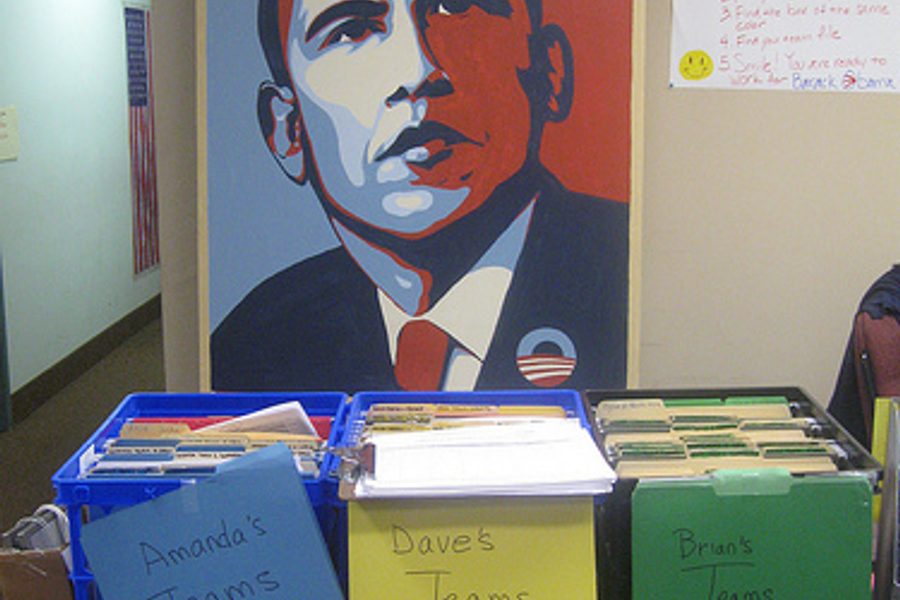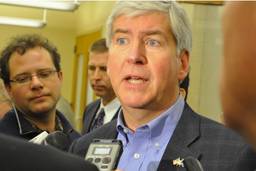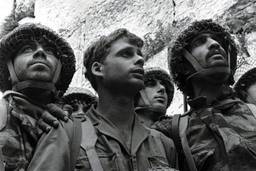
Monday, the fifth day after the first debate of the 2012 presidential election, I arrived in Toledo, Ohio, where I’ll be spending the next two weeks knocking on doors and phone-banking for Barack Obama and Sherrod Brown.
The post-debate polling is not looking very good for either of my candidates. A headline on Toledo’s ABC TV network affiliate, 13abc.com, reads “Rebound? Romney leads Obama in new Ohio poll.” The story cites a new survey by Wenzel Strategies that shows Romney leading Obama in Ohio by 48 percent to 47.3 percent, and the Eddie Haskell-esque Republican Senate candidate Josh Mandel ahead of Democratic incumbent Sherrod Brown 46 percent to 42 percent.
You would never know from this news story that Wenzel Strategies is not exactly non-partisan — in fact, it polled for Rand Paul’s campaign. Nevertheless, it’s clear that the President has lost ground. Pew Research shows the candidates tied at 46 percent among registered voters [PDF]; Gallup puts Obama ahead 49-46 percent. (Romney leads among likely voters in both polls.) With the election tightening, getting out the vote in battleground states such as Ohio becomes increasingly more important.
Which means pumping up turnout in places like Toledo. An inland port located at the mouth of the Maumee River on the far western shore of Lake Erie, Toledo made its bones as an automobile, glass and industrial center. Unionization led to the creation of a multi-ethnic, multi-racial, solid middle class. Organized labor remains a powerful electoral presence in Ohio’s fourth largest city. Of the 240,000 votes that came out of Toledo’s Lucas County in the 2010 election, an estimated 40,000 were cast by union families.
Arriving at the Toledo Central Labor Council offices, located in the Teamsters Headquarters, I’m briefed by Kate, a 23-year-old with a welcoming but all-business manner, in the way of campaign operatives the nation over. Kate gives me a brief orientation on the issues, logistics and schedule I’ll be following during my time in Toledo. Mornings begin with phone banking at 10:00 a.m., followed by house visits from 1:00 p.m. until sundown, followed by debriefing and, if it’s not too late, more phone banking.
Aside from campaigning for Obama and Sherrod Brown, I will be talking up Issue 2, a voter initiative to change the way Congressional redistricting happens in Ohio — taking it out of the hands of the (currently Republican) legislature hands and placing it in those of non-partisan citizens’ commission. I’m shown a map highlighting a newly created boundary splitting a single Toledo school district between two different Congressional districts. The new 9th district, which forced a primary between Democratic incumbent Reps. Dennis Kucinich and Marcy Kaptur, looks like a narrow-bodied reptile curling 120 miles eastward along Lake Erie shoreline and marsh land from Toledo almost to Cleveland.
I’m advised that awareness of Issue 2 remains fairly low, but that once voters are educated about this initiative they tend to support it. This is true for Republicans as well as Democrats. Kate suggests that canvassers lead with the redistricting issue at the doors, then move to a conversation about the candidates. Kate hands me a packet of literature, scripts, issue and candidate backgrounders, and a sample walk-list and map, and instructs me to be at the all-volunteer meeting scheduled for every Tuesday morning at 10.
There are approximately a dozen and a half volunteers and staff sitting around the union hall tallying walk-lists or telephoning voters. More will be arriving later. The volunteers all appear to be in their fifties and sixties and seventies, while the full-time campaign coordinators directing them look to be in their twenties and thirties.
We could be their parents and grandparents.
If there’s hope for the future, I think, heading across the freshly paved Teamster parking lot to my rental SUV, this is how it’s going to look.







